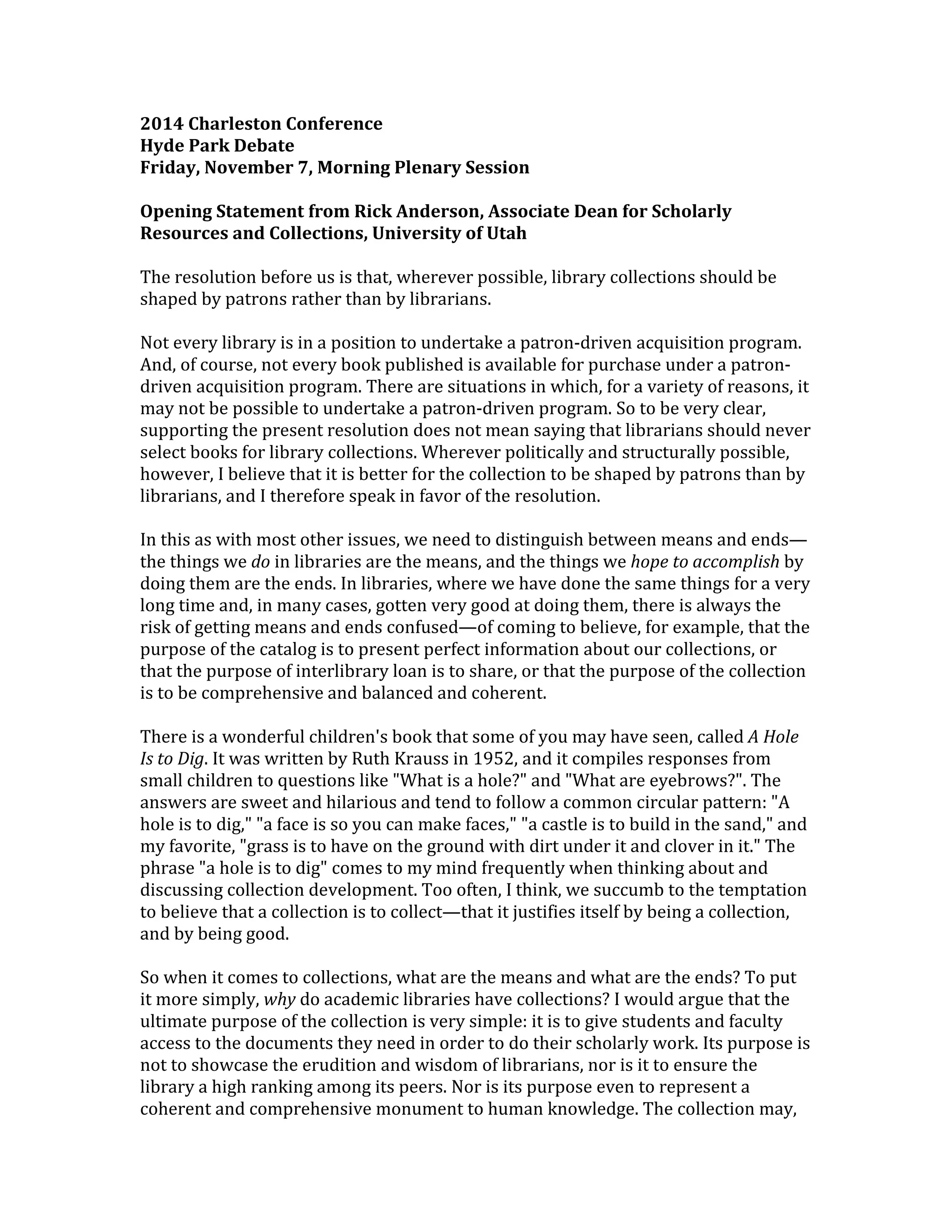- The resolution debated was whether library collections should be shaped by patrons rather than librarians wherever possible.
- The speaker argued in favor of the resolution, stating that the ultimate purpose of academic library collections is to provide access to resources needed for student and faculty scholarly work, not to showcase librarian expertise.
- Common objections to patron-driven acquisition were addressed, such as concerns about predicting future needs, ensuring quality, and controlling costs. The speaker believed these objections were often library-centered rather than patron-centered and that patron needs should be prioritized in collection development.



